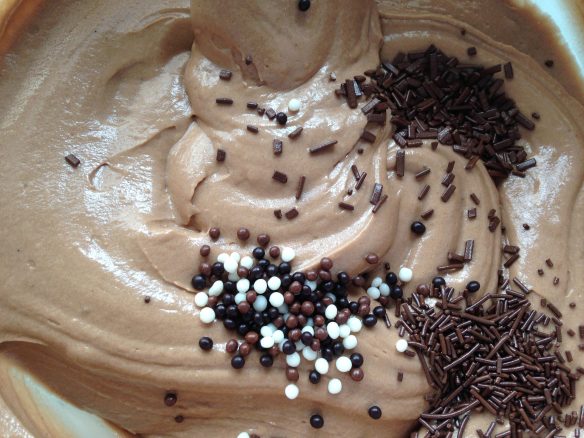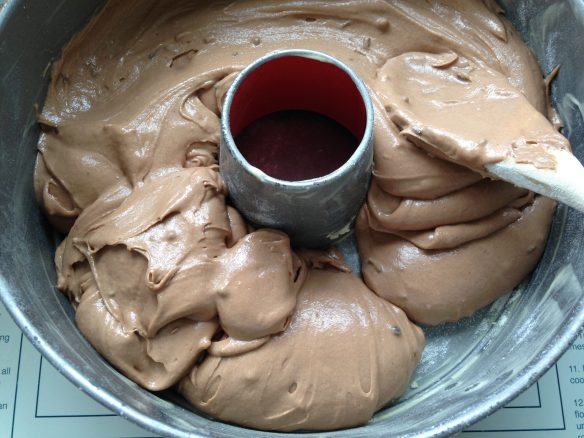
Autumn brings lots of good things like misty mornings, crispy days, bonfires and fireworks – and the annual honey shows.
The London Honey Show at the Lancaster Hotel celebrates the end of one beekeeping season and the start of the next.
For a small fee of £1, donated to Bees for Development, you’ll enter a room filled with bee paraphernalia – honey, mead, honey beer, honey cakes, bee art, wax candles, wax flowers, cook books, bee books, cosmetics, jewellery, exotic hives… and lots of beekeepers, quite a few from Ealing.

What I enjoy most about The London Honey Show are the talks. They are not too long or too many to stop you from walking around and sampling the stalls, but they leave you sparkling with bee knowledge. It’s like the Ted Talks of beekeeping, so here’s a bonus post for this week on the three speakers.
Products of the hive and what to do with them by urban beekeeper Judy Earl gave us new ideas for old ingredients: honey, propolis and beeswax. A beekeeper for 10 years, Judy has spent hours experimenting in her kitchen. Skipping over pollen and royal jelly (she had rarely met a beekeeper in the UK who uses these) Judy explored medicinal, cosmetic, decorative, culinary, and other uses of the hive.
While New Zealand’s Manuka honey is widely acclaimed for its antimicrobial properties, propolis has long been a medicinal component used for skin ointments and tinctures for sore throats. “Although reading some sources would seem to make propolis a cure-all,” said Judy.

From honey-and-slippery-elm tablets to beeswax-and-chili plasters, Judy has tried every remedy including a garlic-and-beeswax chest rub which was so pungent the judges refused to try it at the national honey shows.
There are a wide range of do-it-yourself cosmetics from soaps and yoghurt-and-honey face masks to lipsticks and mascaras. “The easiest to make is lip balm,” said Judy, which can be blended with other lovely ingredients such as avocado oil. “Be sure to use the cleaner white wax cappings when making products for the lips and face.”
Foods like honey and mead are just the beginning we discovered as Judy described delicious recipes for flavoured vodkas and honey liqueurs. She gave an easy shopping list for blackberry vinegar made with 600ml white wine vinegar, 450g sugar, 450g blackberries, and 225g honey.

From dipped and moulded beeswax candles, the hive has a cornucopia of practical and decorative uses. Mixing 100g beeswax and 250ml turpentine is the “easiest thing” to make beeswax polish, while “wax crayons is quite a labour of love”. Judy showed the nice things we could do with decorative wax confectionary and flowers. Her take-home message: “Anything that comes out of your hive can be used, don’t burn it use it!”
Saving our bumble bees by Professor Dave Goulson, author of A Sting in the Tale and A Buzz in the Meadow, pointed out that honeybees are nice but they’re not everything. “There are around 26 species of bumble bees in the UK, the numbers keep changing, and around 220 species worldwide,” said Dave, a bit miffed.

A plate of different bumble bee species from Collins Beekeeper’s Bible.
As an academic at Sussex University, Dave has spent around 30 years studying bumble bees, although his first foray at age seven into bumble bee conservation didn’t start well:
“On one occasion, after a heavy summer rainstorm, I found a number of bedraggled bumblebees clinging to my buddleia, and decided to dry them out. Unfortunately for the bees I was, perhaps, a bit too young to have a good grasp of the practicalities. With hindsight, finding my mum’s hairdryer and giving them a gentle blow-dry might have been the most sensible option. Instead, I laid the torpid bees on the hotplate of the electric cooker, covered them in a layer of tissue paper, and turned the hot plate on to low. Being young I got bored of waiting for them to warm up and wandered off to feed my vicious little gerbils. Sadly, my attention did not return to the bees until I noticed the smoke. The tissue paper had caught fire and the poor bees had been frazzled. I felt terrible. My first foray into bumblebee conservation was a catastrophic disaster.”
A sting in the tale, Dave Goulson
Luckily it got better.
Bumble bee colonies are annual, said Dave. They start again each year with late summer queens who have mated and leave their nests to bury in the ground over winter. In spring, hungry bumble bee queens emerge to feast on flowers and search for an uninhabited mouse or vole nest in a lawn. Then satisfied, the bumble bee queen lays her eggs and sits on them like a bird, pressing her stomach and shivering to keep them warm.

Another fascinating fact about bumble bees is that these furry insects are like us – warm blooded. Bumble bees are thought to have originated 30 million years ago in the eastern parts of the Himalayas, where around 60 different species of bumbles still live. But being big furry insects adapted to live in colder climes, bumble bees have enormous energy requirements. “A bumble bee beats its wings 200 times per second to stay up in the air.” To maintain body warmth and function they must eat a lot and often. “A bumble bee with a full stomach has 40 minutes before starving to death.”
While Dave promised the talk wouldn’t be all gloom and doom, he couldn’t tell us these bumble bee delights without sharing a cautionary note for the future. Bumble bees are important pollinators, “While your honeybees are shivering inside in early spring, bumbles are out and about pollinating tomatoes. Honeybees are rubbish at pollinating tomatoes,” Dave told the room full of beekeepers. “Tomatoes require buzz pollination which honeybees haven’t worked out how to do, but bumble bees have.” In fact, every tomato that we eat in the UK has been pollinated by a bumble bee, which could mean fewer generous helpings of tomato sauce if these insects decline.

Three British species of bumble bee have become extinct in the past 100 years and many other species are declining. Why? Changes to farming, exposure to foreign diseases and pesticides like neonicotinoids are all contributing factors, Dave explained. “About a quarter of British bumble bees suffer from an Asian honeybee disease, nosema ceranae, which is very sad.”
We were shown a table of agrochemical applications on an oilseed rape field in Sussex, which had 20 different types of chemicals thrown on a single crop. Wild bees, honeybees and other pollinators are bombarded by different pressures, toxins and loss of natural habitat. We need to learn how to look after them better.

How fast are bumble bees declining? That’s hard to say, Dave admitted, because we have an idea of honeybee losses from the number of hives, but bumble bee nests are small holes in the ground that are difficult to find. This is where the army are called in to help! A specially trained sniffer dog, Toby, sniffed out nest holes so that researchers could set up cameras and learn interesting things about bumble bees.
One thing they learnt is that great tits are a predator of bumble bees. We watched a clip of grainy footage as a great tit sat outside a bumble bee nest waiting to pick off the workers. From the piles of bodies, Dave’s team found out that each bird had a favourite way of eating its snacks: biting the thorax and chewing on the wing muscles, or chopping off the bottom and scooping out the innards.
Badgers are also a predator of bumble bees, digging up their nests to eat, particularly during hot dry summers.

A picture of pretty bee art to offset the doom and gloom. A lovely project by Hallfield School Year 3.
So it seems bumble bees face a lot of challenges, what can we do to help? Dave outlined an action plan:
• Make people aware about the plight of bumble bees, not just honeybees
• Working with children – kids love beasties so keep them engaged and interested about insects
• Join a citizen science scheme, there are lots in the UK finding out how bees are doing
• Promote wildlife friendly gardens using traditional cottage plants not intensively bred flowers – “You may as well have plastic plants than hideous bedding” said Dave
• Badger councils to stop mowing verges of roads and roundabouts to leave them for wild flowers, bees, hoverflies and butterflies.
Go to the Bumblebee Conservation Trust for lots more information about bumble bees, including how to identify them, and follow Dave Goulson on Twitter @DaveGoulson.
A short Q&A followed Dave’s talk. I asked what is his favourite bumble bee? “Shrill carder,” said Dave “It makes a shrill sound up in the air.”

Our grocery shopping would look very different without pollinators.
Dave reminded us that three-quarters of life on earth is made up of insects and that life would be very different without them. These small creatures not only pollinate our world but fulfil many important tasks like recycling, waste disposal and are part of the food chain of larger animals.
However, Dave’s talk did have a sting in its tail, “All bees have a common ancestor around 120 million years ago – wasps that lived in the age of dinosaurs.” These wasp ancestors kept burrows in the ground filled with paralysed insects. It’s thought that they began to collect pollen, and eventually collected more and more pollen and fewer paralysed insects until they became vegetarian wasps – or bees.
The final talk on Spoonfuls of Honey by food writer Hattie Ellis was a warm hug on a cold dark autumnal evening. Though Emily, Jonesy and I had all sampled the honey beer, mead and cocktails, so we were feeling particularly warm already.

Hattie took us on a sensual culinary journey of cooking with honey, illustrated by using small amounts of honey to make simple food wonderful. Her colourful descriptions of mango honey from Jamaica and quince honey from Kew filling a whole room with fragrance made my imagination run wild. This was a great talk for a beekeeper and an aromatherapist. “How do you evolve a language of the flavour of honey?” asked Hattie. You cook with it. A sumptuous display of delicious dishes ensued from borage or orange blossom honey spooned over buttery Madeleines to chestnut honey drizzled over chocolate ice cream.
“Honey’s best friends are things the bees like,” said Hattie, “Like apricots with thyme, and elderflowers fritters.” Her talk was driving me crazy! “Cheese and honey are a marriage made in heaven,” she continued to describe dipping walnut bread and honey in baked Camembert.

For the carnivores there was also honey-glazed lamb and sweetened tamarind ribs. Hattie recommended using cheaper honeys to cook and saving speciality honeys to drizzle. The fructose in honey tastes sweeter than the sucrose in sugar, so less can be used if baking, say, a Drambuie-soaked fruit cake.
Take care to use a lower temperature when cooking with honey, warned Hattie, as it burns more easily.
As we salivated over a picture of a fig-and-honey tart, Hattie led us from sweet to savoury dishes like leeks scattered with toasted bread crumbs and pollen, and pollen-flavoured shortbreads. It was too much.

Hattie finished with a rather sexy description of how to savour the taste of honey slowly on the tongue – it would make a bee blush.
You can read more about Spoonfuls of Honey on Hattie’s website.
The night ended with announcements for best honeys and Beekeeper of the Year. We didn’t win the honey prize, so instead floated between stalls like aimless drones before flying home. I can’t wait till next year’s London Honey Show!




















































